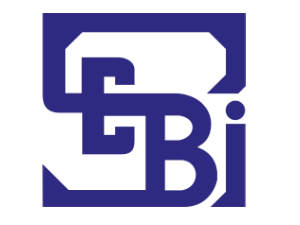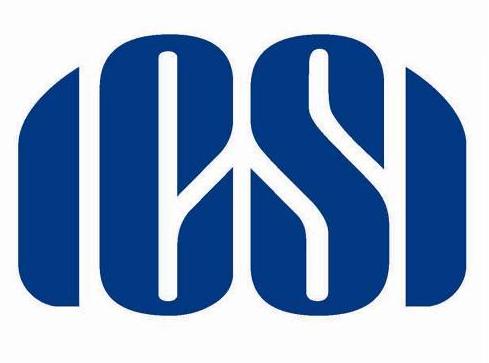|
|
Main » 2011 » December » 2 » xbrl
|
XBRL – EXTENSIBLE BUSINESS REPORTING LANGUAGE
‘A Global revolution’
Introduction:
Charles Hoffman, a CPA conceived the idea of XBRL as he was who investigated how XML could be used for electronic reporting of financial information. The Australian Prudential Regulatory Agency (APRA), one of the world’s largest regulatory agencies was the First Bank Regulator to adopt and use XBRL.
What is XBRL?
XBRL is a Digital Language for electronic communication of business and financial information which is set to revolutionalise business reporting around the world. It provides a common electronic format for business reporting and can make the process of creating, distributing, reporting and analyzing the information more efficiently and effectively. Using XBRL would make it possible to store financial information in a computer readable format. Remember it’s a Language and not Software.
XBRL belongs to the family of XML languages which has been specifically designed to meet the business and financial information requirements. It is seen as a tool that would bring in greater transparency and good corporate governance. It is being developed through collaboration between accountants and technologies from all over the world. Together, they formed XBRL International which is now made up of 650 members which includes global companies, accounting, technology, government and financial services bodies.
How does XBRL work?
The idea behind XBRL is simple. Instead of treating financial information as a block of text it provides an identifying tag for each individual item of data. This is computer readable. The introduction of XBRL tags enables automated processing of business information by computer software, cutting of laborious process of manual re – entry and comparison.
XBRL make the data readable with the help of 2 documents – Taxonomy and Instance document.
• Taxonomy: It contains concept and defines framework with respect to regulatory requirement. It can be considered as an electronic dictionary for business and financial terms.
• Instance document: Using the Taxonomy framed, companies map their reports and generate an instance document. The financial Statement of a company or any part thereof, expressed in XBRL format would be n Instance Document.
There are a number of ways to create financial statements in XBRL format:
• Financial statements can be mapped into XBRL using XBRL software tools and applications designed for this purpose.
• Data from accounting databases can be extracted using third party products to achieve the transformation of data to XBRL.
• XBRL aware accounting software products may be utilized which will support the export of data in XBRL form.
With the use of tags, XBRL makes data interactive. For example, the tag affixed to Rs.100/- ‘Cash’ amount will have a descriptive name, such as ‘Cash.’ Once the tag is affixed any software capable of reading XBRL will be able to determine that the Rs.100/- represents cash, under the tag ‘Cash’ which is a current asset and is to be included in ‘Total Current assets.’
Why XBRL:
The number of high profile corporate failures in the past such as Enron, World com, Quest, Xerox, Global Crossing etc. has resulted in a very high demand for transparency in reporting procedures and good corporate governance. Organisations spend huge resources in financial reporting processes and also face challenges in meeting the different reporting requirements. This has resulted in finding the most effective business solution to overcome the challenges faced by most of the organisations whether big or small. There XBRL came into view. In recent times it has emerged to help in effective reporting, data analysis and comparability of financial information easily, quickly and in an effective and efficient manner. In the current business environment, XBRL seems to have evolved as the key to unlock the complex challenges faced by the organisations and regulators alike.
XBRL – Challenges in Implementation:
The Companies have a period of less than 4 months to convert the financial statements into the XBRL format. They need to quickly gear up to and benefit from this new reporting challenge, which means that the technology solutions need to be put in place very swiftly and finance teams need to quickly grip with the XBRL terminology and taxonomy.
Some of the Challenges which might be faced by the companies while implementing XBRL reporting are as follows:
• Requirement of training staff
• The Software tool to be used for the purpose of tagging the financial tools
• The first time efforts for tagging the financial statement data correctly to the relevant taxonomies
• Smooth and timely closure of reporting within the prescribed timeline
• Ability to fully leverage XBRL, beyond regulatory compliance.
One of the biggest challenges comes from the fact that XBRL reporting in ERP systems like SAP, ERP, Peoplesoft and other systems reflects a single ERP instance. Getting a consolidated view of financial data before it gets tagged in the XBRL format can be challenging. The challenge isn’t new, but before XBRL CFO’s and others could manage their consolidated financials ad hoc but now CFO’s are being forced to use standardized means of consolidation in order to avoid manual XBRL tagging.
XBRL - The Global Scenario:
Many countries like Japan, Italy, China, United Kingdom and United States have mandated or are in the process of mandating the XBRL filing of financial information. In UK, XBRL will be made mandatory in 2011 and moreover, most of the companies already report in XBRL format. In US, XBRL has been introduced in a phased manner. There is also a high degree of implementation in countries like Canada, Belgium, France, Germany, etc.
XBRL - The Indian Scenario:
In India, The Ministry of Corporate Affairs (MCA) through its circular No. 37 dated 07th June 2011 requires the companies to file their financial statements in XBRL format. The circular marks an important step in ensuring XBRL compliance for financial statements filed by Indian companies.
As per the circular the following companies will have to file their statements in the XBRL format:
All companies listed in India and their Indian Subsidiaries
All Companies having a paid up capital of Rs. 5 crore and above
All Companies having a turnover of Rs. 100 crore and above
The government has exempted NBFC’s, Banking, Insurance and Power companies and their overseas subsidiaries from filing their annual documents in XBRL format. The companies now have to file their Annual Documents by 30th September 2011 without paying an additional fee. However, where companies hold the Annual General Meeting in the month of September 2011, they are permitted to file their Annual Documents within 30 days from the date of adoption in the General Meeting as per section 220 of The Companies Act, 1956. The financial statements to be filed would be based on the existing Schedule VI of the Companies Act 1956 and the prevailing Indian Accounting Standards.
XBRL in India! Is It Justified?
Why is XBRL implementation important in India? Is it only because of the statutory requirement or our approach should be what was the need for such statutory requirement to change the whole of the reporting system in India. Corporate perception has to change in this regard and this can be achieved only when the top management realizes the importance of XBRL benefits.
The main objective of XBRL is transparency in reporting and is of immense utility to capital markets and the Investing communities. It involves huge initial conversion costs for companies but the long term benefits for the investors and the capital markets would be significant. The introduction of XBRL in India will increase the ability of different regulatory bodies to use the same set of electronic data without the need for manual Re – Keying of date or sending hard copies of documents to different bodies. For example, the same financial data with XBRL tagging can be filed with the Ministry of Corporate Affairs to meet the Companies Act requirements, shared with SEBI and the NSE/BSE to meet the listing requirements, provided to the companies lending institutions and uploaded to the companies website so that the companies can easily access it. The introduction of XBRL in India may increase efficiency of sharing information with national regulators, it does not by itself help with the goal of achieving convergence of Accounting Standards with the International Financial Reporting standards. The MCA and the ICAI’s efforts in this regard continue to be of vital importance to users and preparers.
Advantages:
The benefits of XBRL extend beyond the financial reporting supply chain into many other key areas, helping users to develop comprehensive measures of performance and value. After all, financials alone don’t determine the value of organization. While the initial focus was on the use of XBRL for financial reporting both internally and externally, XBRL today is increasingly used for non financial reporting also.
The major benefits of XBRL include, but are not limited to the following:
• Companies can use XBRL to save costs and streamline their processes for collecting and reporting financial information. Consumers of financial data including investors, analysts, financial institutions and regulators can receive, find, compare and analyze data much more rapidly and efficiently if it is in the XBRL format.
• XBRL can handle data in different languages and accounting standards. It can flexibly be adapted to meet different requirements.
• XBRL permits automatic exchange and reliable extraction of financial information across all software formats and technologies, including the internet.
• XBRL for internal reporting and decision making brings efficiency, accuracy, reduced cost but it doesn’t change the scope of data that you are analyzing and reporting on.
• Generally, financial statements are large printed documents and if one had to compare these statements say of 10 companies, it would consume some days, even weeks to do so. The implementation of XBRL would significantly reduce the effort.
The benefits don’t stop there. Tax, internal audit, sales and marketing, investor relations also gain value from XBRL. They can share information quicker, cheaper and in more integrated manner. It will also reduce the compliance burden of the corporate as they will not be required to file data to multiple agencies separately. The Financial statements prepared in the XBRL format can be submitted uniformly and at one place to various regulators, external auditors and financial institutions.
Disadvantages:
Despite its advantages, XBRL has disadvantages as well:
• Lack of experience increases the opportunity for errors
• XBRL involves transparency which takes away a companies ability to hide financial tricks in the books
• Though XBRL leads to a decrease in reporting costs, some companies may find it difficult to justify the initial costs.
• As XBRL data remains available at all times, it requires more security to maintain its integrity.
ICAI AND XBRL:
ICAI is taking the XBRL initiative in India. In 2008, ICAI applied to XBRL International Inc. for establishing the Indian XBRL provincial jurisdiction. During 2010, XBRL India was awarded the status of an established jurisdiction. ICAI has also floated a company ‘XBRL India’ registered under Section 25 of the Companies Act, 1956. The company is facilitated by ICAI and has been incorporated for managing the affairs of Indian jurisdiction of XBRL International.
ICAI has built up the Taxonomy which contains the concept; it does not contain any factual information reported by the entity. The Taxonomy has been constructed on the following reporting categories:
• Commercial and Industrial
• Banking Companies
• Non-Banking Finance Companies
The ICAI XBRL Taxonomy has been constructed to conform to the existing Indian Accounting Standards and the Company Law.
XBRL AND IFRS:
Transparency in financial reporting is tremendously increasing around the world and the two global standards have assisted in achieving this objective. Both XBRL and IFRS are intended to standardize financial reporting in order to promote transparency and to improve the quality and comparability of financial statements. Companies which are converging with the IFRS from 1st April 2011 will also have to incur an additional cost of complying with XBRL. This means the IFRS convergent companies along with the non-convergent companies will have to start filing their documents in XBRL format.
The IFRS foundation XBRL team is responsible for developing and maintaining the IFRS taxonomy. The foundation makes a concerned effort to promote the use of XBRL in conjunction with IFRS around the world. The foundation also encourages co-operation and communication with users of IFRS Taxonomy.
XBRL AND ERP:
Why can’t the universal portability of financial information be achieved through ERP systems? The ERP system has some inherent limitations for assuring easy transfer of data. Many companies use several products of a same vendor or mix together products of different vendors. The ERP applications are basically closed systems. They cannot respond to the challenges posted by the new distributed information environment where data from both internal and external systems is constantly exchanged, and therefore must be easily accessible and transferable. On the other hand XBRL is a data standard and thus XBRL itself is not a replacement of ERP systems. XBRL can be used with both ERP and as a means for implementing ERP alternatives. For example XBRL allows you to enter data once and deliver it in many formats. With ERP data is in proprietary formats which need to be transformed into management information. It should be emphasized that XBRL is simply a dada standard and thus interactive data itself is not a replacement for ERP systems. But XBRL can be used successfully both in conjunction with ERP and as a means for implementing ERP alternatives.
XBRL - The Way Forward:
‘The future’s so bright I gotta wear shades’. There really is no better way than this to describe the future of XBRL. But making that bright future first requires us to be honest about the present and the potential. India is working to make its financial markets more accessible to foreign investors and to that end its mandating the use of XBRL in a bid to improve corporate reporting quality and reduce fraud. Already India’s corporate affairs ministry and securities regulator have announced plans to require firms to tag filings in XBRL. Both the finance ministry and the ministry of heavy industries and public enterprises said they plan to adopt XBRL mandates in future. The reporting language is already being used in the western world. Now it is emerging in the developing world, as well – an indication of value it can bring to both regulators and the private sector. XBRL is set to become the standard way of recording, storing and transmitting the financial information. It is capable of use throughout the world. It will deliver major cost savings and gains in efficiency, improving processes in companies, government and other organisations.
The XBRL journey has just begun and there are exciting times ahead. In future, companies and accountants will turn to XBRL for meeting internal requirements, including risk areas such as risk management, internal audits and multi GAAP reporting. So in future we have XBRL being produced as the natural output of most accounting systems the implementation will for sure improve the external reporting process by reducing internal data friction. So, the future of XBRL is so bright that if we focus on what XBRL can achieve we can put on the shades.
Conclusion:
There are thousands of companies releasing financial results on quarterly, interim and on annual basis. There is no easy way to compare contents, but for XBRL. It does not require companies to report additional information beyond what they currently report externally. It does not change what is being reported, it only changes how it is reported. It is a language that bridges the gap between business systems. |
|
Views: 12193 |
Added by: BHARAT
| Rating: 1.0/1 |
|
|









